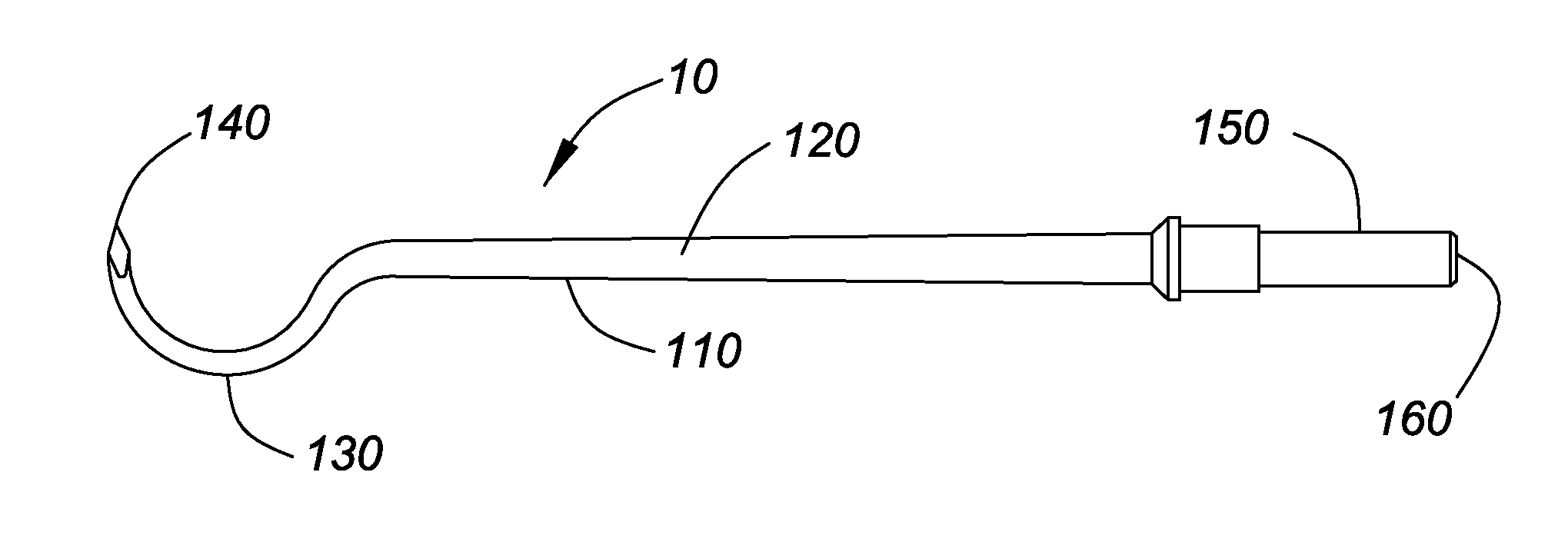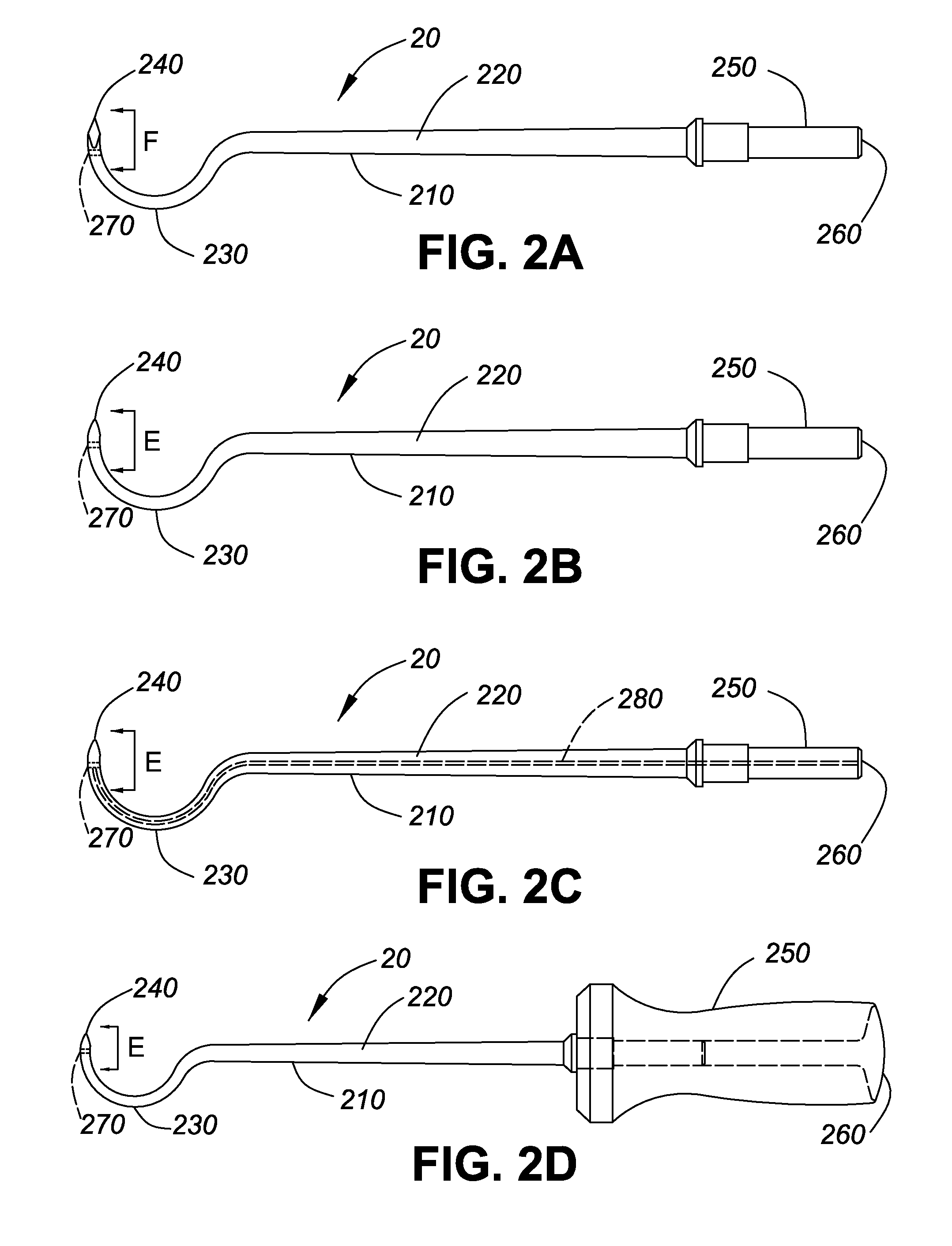Method and apparatus for arthroscopic rotator cuff repair using transosseous tunnels
a technology of transosseous tunnels and rotator cuffs, applied in the field of surgical devices and methods, can solve the problems of suture anchors carrying specific risks, a much more technical and laborious procedure, and are too difficult to achieve with existing instruments
- Summary
- Abstract
- Description
- Claims
- Application Information
AI Technical Summary
Benefits of technology
Problems solved by technology
Method used
Image
Examples
Embodiment Construction
[0034]In one embodiment, there is provided a device for use in making an arthroscopic rotator cuff repair comprising an awl having a gripping portion and a shaft for transmitting force to a hooked bone-penetrating portion for forming bone tunnels, the bone-penetrating portion having a sharp tip. The awl may also function as a suture passer and comprise an eyelet situated below the tip for receiving a suture and passing it through the curved bone tunnel. In another embodiment, a kit comprising a suture passer of substantially the same shape and of a size as the awl is also provided to pass suture through the bone tunnel formed by the awl. The suture passer is preferably blunt. Methods of using the device and kit are also provided in another embodiment. The method may comprise piercing the bone in a first and second location to form a bone tunnel of substantially continuous curvature and passing a suture therethrough.
[0035]Bone-Penetrating Awl
[0036]In one aspect, there is provided a d...
PUM
 Login to View More
Login to View More Abstract
Description
Claims
Application Information
 Login to View More
Login to View More - R&D
- Intellectual Property
- Life Sciences
- Materials
- Tech Scout
- Unparalleled Data Quality
- Higher Quality Content
- 60% Fewer Hallucinations
Browse by: Latest US Patents, China's latest patents, Technical Efficacy Thesaurus, Application Domain, Technology Topic, Popular Technical Reports.
© 2025 PatSnap. All rights reserved.Legal|Privacy policy|Modern Slavery Act Transparency Statement|Sitemap|About US| Contact US: help@patsnap.com



